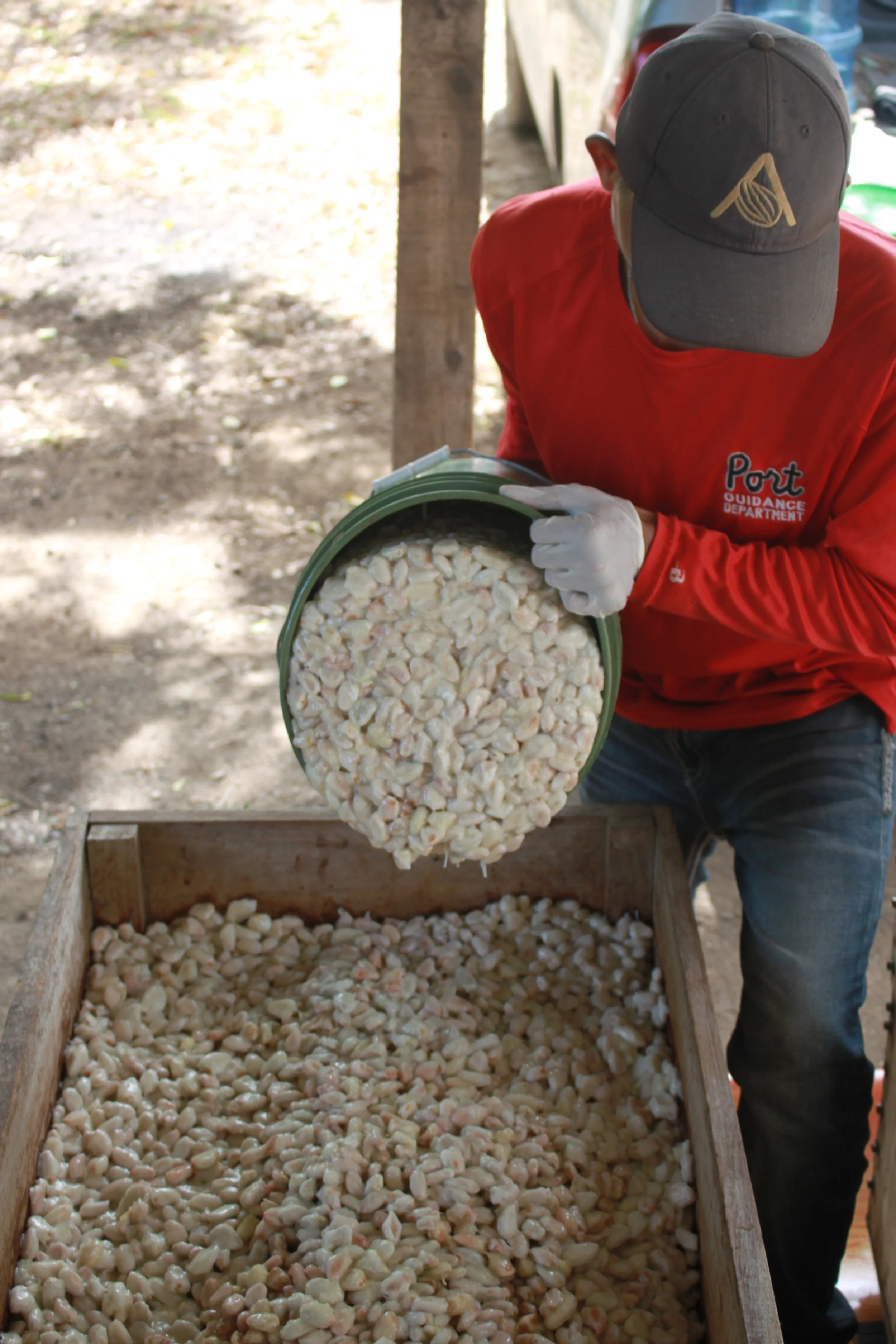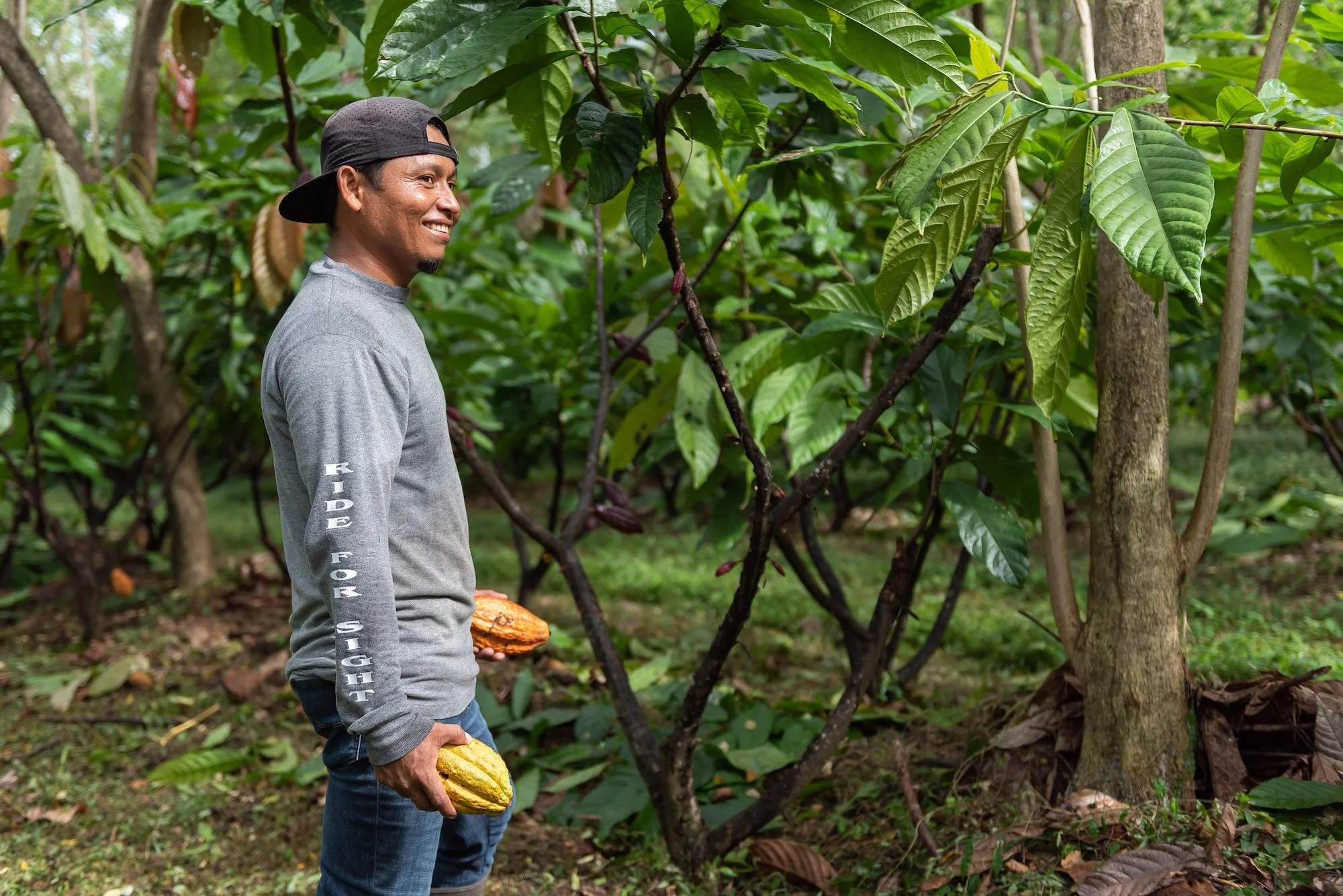How Science is Leading the Way for Argencove: Award-Winning Chocolate from Nicaragua
There’s a popular saying in the chocolate industry: making chocolate is easy, making good chocolate is hard. Crafting delicious chocolate indeed requires a mastery of every step of the process, starting with cacao sourcing and ending with a perfectly tempered bar. A solid background in science and finding the right experts has proven keys to the success of Argencove.
Finding Opportunity in Nicaragua
Cacao fermentation photo credit Argencove
When Argencove founders Sally and Peter McFadyen decided to launch their chocolate company, the couple was aware of the challenges ahead of them. As trained scientists – she as an environmental scientist, he as a water scientist – they took a systemic approach to tackle each of them, starting with the location of their business.
“It was important to make the chocolate at country of origin for the environmental and social impact” says Sally, “and we looked at lots of different countries before coming to Nicaragua. We saw a lot of opportunity here.”
Soon after their arrival in 2016, the McFadyen’s purchased a cacao farm and quickly turned to experts to develop optimal fermentation protocols.
“If you don’t have a good bean, it’s very difficult to make good chocolate,” says Sally, “and one of the best things we did was hire Daniel O’Doherty of Cacao Services right away to learn fermentation 101.”
Bringing in the Experts
Harvest on the farm photo credit Argencove
The couple also reached out to Cacao Research Centre in Trinidad & Tobago and CATIE in Costa Rica to further their cacao knowledge.
On the chocolate-making side, Peter enrolled the help of Alan McLure, formerly of award-winning Patric Chocolate, a pioneer of the US craft chocolate movement, to get up to speed on cacao roasting.
Eventually, Argencove – pronounced argh-enn-cove – launched its chocolate-making operations in Granada, a former Spanish colonial city, in 2018.
“We wanted a name that reflected both the product and farm,” says Sally.
‘Argen’ comes from ‘argent’, which refers to the metal silver. “It evokes something precious, something of high value, a luxury,” says Sally, “and ‘cove’, refers to where the farm is located, below the Mombacho volcano and very close to a lake.”
The Argencove Product Line
Argencove product line photo credit Argencove
Argencove offers a range of 4 single origin dark chocolate bars, all inspired by natural Nicaraguan landmarks. The Masaya bar, for instance, is named after the Masaya National Park and Volcano area, while Apoyo is named after the eponymous Lagoon Natural Reserve.
The formulation of each bar is driven by one factor – deliciousness. The Masaya, for instance, is a three-ingredient bar with cacao beans, cane sugar, and just 1% cocoa butter. Its creamy texture, quick melt, and natural sweetness make it a great choice for people who tend to shy away from dark chocolate.
“We just thought it tasted better with the extra [cocoa] butter,” says Sally.
Inclusion bars
The company also developed inclusion bars inspired by Nicaragua, think passionfruit and banana, cinnamon, and clove. The banana bar especially stands out to a Western palate accustomed to the Cavendish banana, which is the only variety commercially available in the US.
“Our bar is made with a local Nicaraguan banana, which is very small and sweet,” Sally says. The idea for the saffron bar came for an early meeting with Jack Epstein of Chocolate Covered, the famed San Francisco shop. When Peter met him, Jack shared his wish of tasting a saffron bar, so Argencove came up with the Saffron bar with 70% cacao.
The company also turns the cocoa butter pressed in-house as a base for their Caramelized White Chocolate & Almonds as well as the Pecan Pie, both of which were top sellers at the DC Chocolate Festival in 2022. Read our recap of the DC Chocolate Festival.
A Sweet Business
Chocolate factory photo credit Argencove
In the span of 4 years, Argencove has gone from a promising start-up to a respected company with 67 international awards to its name. Its 30 employees are split between the chocolate factory and the nearby cacao farm. Sally points out that the factory workers are all women, who are involved in every aspect of the chocolate-making.
Looking back at their journey, the couple credits the guidance of subject matter experts for their success.
“It’s important to have a network of scientists you can bounce ideas to. We got a lot of feedback from researchers,” says Sally, “and we’re learning every day.”




